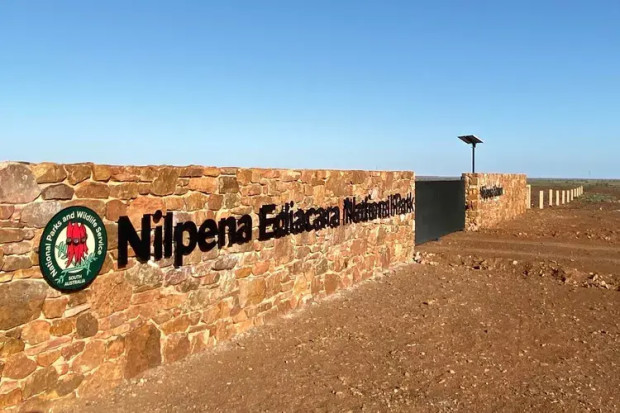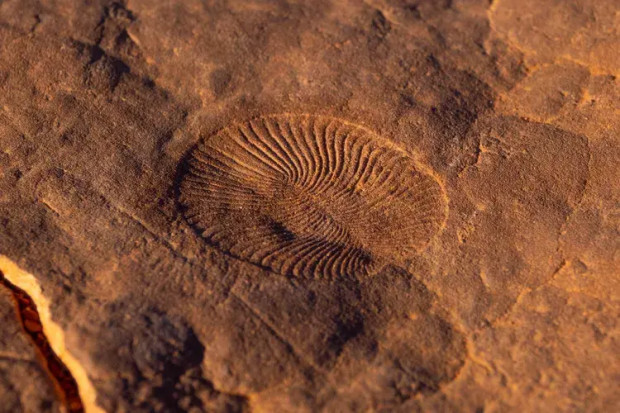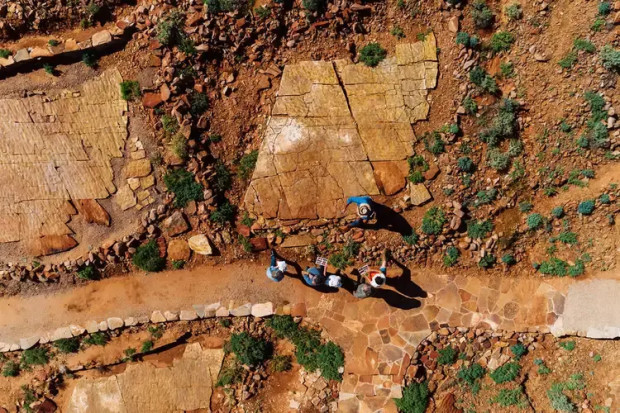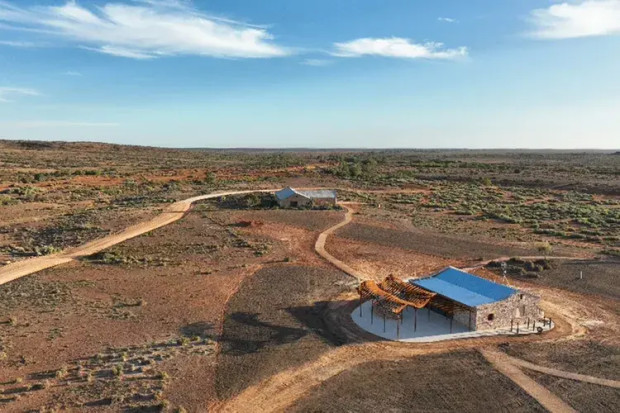Paleontologists rejoice, because Nilpena Ediacara National Park in South Australia—one of the best-preserved fossil sites in the world—just opened as the world's newest national park. Located about a five-hour drive north of Adelaide in the rugged Australian outback, it holds millions of years of history.
The 150,000-acre plot of land includes the former Ediacara Conservation Park, which became protected by the government in 2007, before additional land was acquired in 2019 with plans to expand the park to 10 times its original size. Now, visitors can tour the lands and behold the 550-million-year-old biological artifacts for themselves.

Geologist Reg Sprigg first discovered groundbreaking impressions of animals akin to modern-day anemones or sea worms here in 1946. These type of animals were previously believed to have been the missing link between single-cell organisms and the more complex, predatory animals associated with the Cambrian Explosion, otherwise known as the Biological Big Bang. This taxonomic period eventually became known as the Ediacaran biota after the after the Ediacara Hills where they were discovered.
Impressions of the creatures, which range anywhere from a few centimeters to several feet long, were unusually preserved due to the gentle waves of the shallow sea floor, which is now the land of the national park. As a result, the microcosm was protected from storms and other meteorological events that may have otherwise disturbed the creatures, leaving behind incredible fossils.

University of California, Riverside paleobiologist Mary Droser, the lead scientist at Nilpena, has made significant Ediacaran biota discoveries since she and her team began studying the area more than two decades ago.
“Each fossil bed is a snapshot of the Ediacaran seafloor," Droser told National Geographic. "So you have this amazing record where we can look at things like reproduction, competition, whether they moved, population structure, and how they grew—all these insights into where they fit in with our understanding of animal evolution."

But in addition to revealing crucial details about the evolution of life on earth, Droser explained why Nilpena Ediacara National Park also has a lot to teach us about climate change and even understanding life on other planets.
"The Ediacara biota extinction was likely the first of the big mass extinctions caused by global environmental change,” she added. "Hundreds of millions of years ago, this ocean lost its oxygen—like it’s doing today—and turned into a desert over time; that's natural, but what’s happening today isn’t.”

Though stabilized with rock walls and gravel, the fossil beds are too delicate for visitors to explore on their own. However, guided tours of Nilpena Ediacara National Park can be booked through the national parks website.
from Men's Journal https://ift.tt/Bgoq4Ln


0 comments